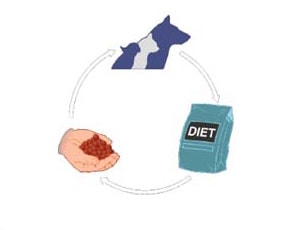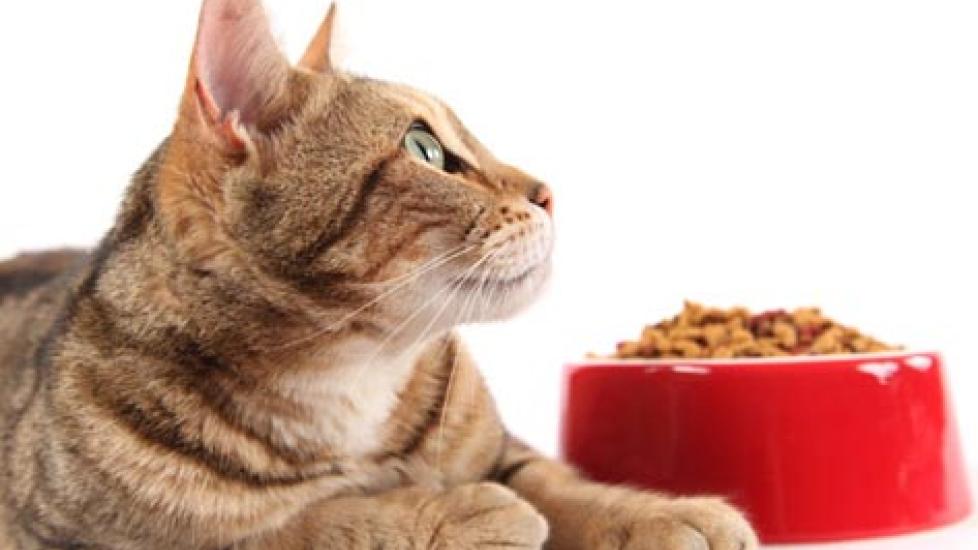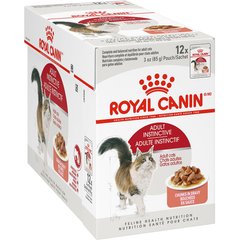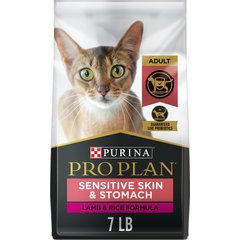Environmental Impacts on Your Cat's Nutrition
At first glance, feeding cats seems like it should be a relatively simple endeavor. An owner picks out the best cat food that offers balanced nutrition made from quality ingredients and places it in front of the cat. He or she promptly eats it and all is well. However, making sure that a cat’s nutritional needs are met depends on three interconnected variables: the animal, the diet and the environment.

[Provided courtesy of the American College of Veterinary Nutrition]
Vet Recommended Cat Food
- Purina Pro Plan LIVECLEAR Adult Indoor Formula Dry Cat Food, 3.2-lb bag$23.48Chewy Price
- Hill's Science Diet Adult Multiple Benefit Chicken Recipe Dry Cat Food, 15.5-lb bag$63.99Chewy Price
- Royal Canin Feline Health Nutrition Adult Instinctive Chunks in Gravy Cat Food Pouch, 3-oz, case of 12$26.28Chewy Price
- Purina Pro Plan Adult Sensitive Skin & Stomach Lamb & Rice Formula Dry Cat Food, 7-lb bag$28.08Chewy Price
If you own a healthy, adult cat, use the MyBowl tool to make sure that the diet you’ve selected is balanced and made from quality ingredients. If your cat has a medical condition, talk to your veterinarian about appropriate dietary options. Once you have the right food for your cat picked out, evaluate the way that the environment might be playing a role in his or her health and nutritional status.
For example, research1 published in 2011 revealed that stress alone is enough to make otherwise healthy cats sick. During the study period, cats were stressed by seemingly mundane things such as cold temperatures, altered schedules, changes in who took care of them or where they lived, removing or rearranging furnishings or toys in their environment, loud noises, an absence of hiding spots or perches, and abrupt changes in diet. In response, the cats vomited, brought up hairballs, urinated or defecated less frequently than normal, failed to use the litter box, ate poorly, were less active than normal, and avoided social interactions. These symptoms of illness all disappeared when the cats’ stress levels returned to normal.
This study calls attention to the fact that cats who are stressed and/or sick do not eat well. Even if you have chosen the best cat food, it can do him no good if he is not eating it.
Lifestyle is another example of a variable that has a direct effect on a cat’s health and nutritional needs. A 2007 study2 of 288 cats from the Netherlands found that indoor confinement, low physical activity and a low intake of dry food were all associated with an increased risk for the development of diabetes mellitus. The take home message from this research is not that cats should live outdoors, but that indoor-only cats need to be kept physically active to prevent weight gain and lessen their risk of developing diabetes mellitus.
So, while picking out the right food for your cat is undoubtedly very important, don’t neglect the impact that exercise, stress-reduction and other environmental factors have on nutrition and feline well-being.
1 Sickness behaviors in response to unusual external events in healthy cats and cats with feline interstitial cystitis. Judi L. Stella, Linda K. Lord, and C. A. Tony Buffington. Journal of the American Veterinary Medical Association.
2 Slingerland LI, Fazilova VV, Plantinga EA, et al. Indoor confinement and physical inactivity rather than the proportion of dry food are risk factors in the development of feline type 2 diabetes mellitus. Vet J 2007.




